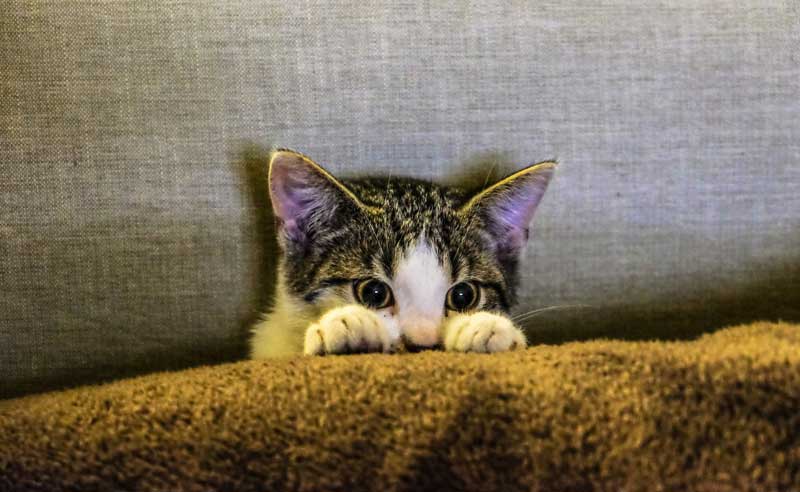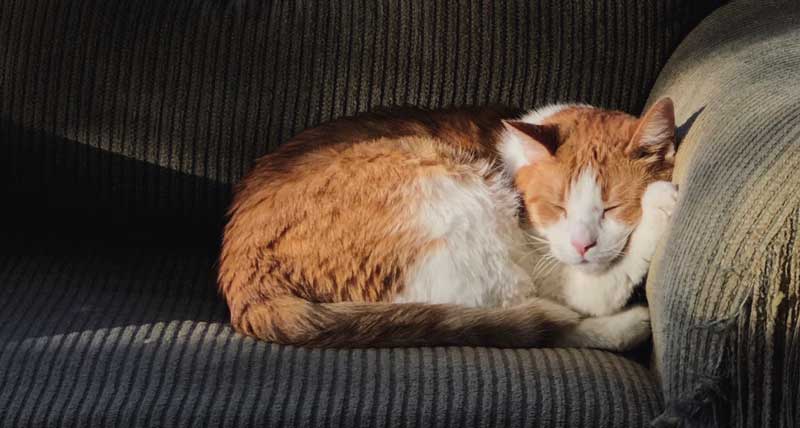Cats are the most popular pets in the world: cute, cuddly, fun but in every way built for the hunt. One of the coolest things about cats is that they are truly wild creatures that we get to share our spaces with. Beloved by so many but rarely studied, what do you really know about the lion in your living room?
As one of nature’s most capable predators, they are solitary hunters existing as a symbol of balance, grace, and elegance. With how domesticated they are it’s hard to believe that they have truly inherited the wild prowess of their ancestors. If you’ve ever seen two cats play with each other then you have witnessed the beginning stages of an ancient hunting pattern; in the wild, it would soon give-in to the real thing.
Their powerful muscles, flexible bodies, sharp claws, sensitive paws, and even delicate whiskers all play a role in the movements of these true hunters. Surprisingly though, their elegant walks are not very efficient in the ways of speed compared to that of a dog but they provide stealth when they want to hide and strike their prey. The same evolutionary demands have shaped some of their cutest behaviors like the instinct to hide from enemies and leap out at prey.
Although they are little, they are fierce and an average house cat can leap five times its own height; some even more. They are instinctual, spontaneous, and quick with the magic behind their agility being that they are able to turn their bodies to land on their paws in as little as 30 centimeters. This is not as simple as it sounds and at first and it seems to defy the laws of physics. As a cat begins falling, they feel the long-distance and they are able to stretch out their bodies with their legs out in all directions creating a parachute that stretches the skin of its belly which slows the progress down. This is where the joke about their 9 lives comes from.
Like their large carnivorous cousins, cats spend most of their time between hunts, resting. They spend at least half their life sleeping; but when they move, it is quick; a house can run almost 50 km for an hour within short bursts. Their anatomy is uniquely designed with floating clavicles, so their collar bones are not fixed in place to their skeleton and instead floats within their muscles; enabling them to maneuver in and out of tight spaces. They also have a compatible ribcage to help them with this.
A cat’s evolutionary history as a predator that stalks and pounces for the kill is evident in how they play, how they move, and even in how their senses work.
When they are born, they have a great sense of smell that helps them sense their mother and get milk. As newborns, they don’t really hear because their ears are flapped down and they can’t really see because their eyes are closed. However, within about five days of age, they gain sight, and their earflaps start to come up. Despite being born deaf, it’s their sense of hearing that best reveals their wild ancestry

A cat’s ears can swivel to help them locate the source of the sound; pointing backward, forwards, or sideways. Once matured, they can hear two octaves higher than humans and a full octave higher even than a dog. Cats can hear the squeaks of a mouse which is helpful for the hunt.
They can hear what we call ultrasound and this enables them to track down their prey and locate it better. Their ability to hear ultrasonic squeaks too high pitched for human ears isn’t the biggest surprise but based on their physiology they shouldn’t be able to hear the low frequencies. However, to biologists, the most interesting thing is that they can hear human voices; particularly low-pitched male human voices. The size of its head and ears dictates that it shouldn’t be able to hear.
It’s not only the range of their hearing that makes them successful hunters but with their impressive sense of smell; cats are 1000x more sensitive than we are. The area inside the nose dedicated to trapping smells is five times larger in domestic cats than humans. While we have perhaps five million smell receptors a cat has 60 million or more. Cats actually have two factory systems, the regular one, which is the same that we have but also the vomeronasal organ which lies between the roof of the mouth and the nostrils; which they use while sniffing other cats.
Smell and hearing are helpful when locating prey but vision provides more detail. Within seven to fourteen days their eyes will open with their vision getting increasingly better by the time they are four months old.
They can hunt in the day or night but their eyes reveal that they prefer low light. Cat pupils are vertically constricting as opposed to our round ones and have evolved to protect their sensitive retinas. This allows their pupillary size to change quickly from contracted to dilated, depending on what they’re doing. These well-protected eyes look out on a world that’s very different than the one we see because they don’t see much contrast in color. Cat’s see mostly blues and grays with not much distinction between orange and red. However, they can see colors that we can’t - like ultraviolet - perfect for tracking their prey’s urine trails. Cat eyes are also reflective which is a by-product of their adaptation to hunting in the dark. There is a special point in the back of the retina called the tapetum lucidum which acts almost like a mirror; iridescent and basically bounces light off of it but then it has a second chance to go through the lens. This enables them to bring more light into their vision than is in the room and thus see into the dark. As amazing as cat eyes are for their night vision abilities, they don’t work well in close range. Things that get within six to eight inches within a cat will go out of focus as they lose binocular vision and start seeing double.

This is where the whiskers come in because when the prey is close enough, the whiskers can feel their exact location. Whiskers are thicker than other hairs and are full of blood vessels and sensitive nerve endings. Each of these specialized hairs sends information about how fast and far it’s being bend, allowing them to chase prey through narrow twists and tunnels; even in total darkness. There are whiskers around the nose/ mouth, eyes, and inside of their paws. They are multi-functional in helping with the spatial orientation as well as to know where they can move to and what type of space they are in.
Even the cat’s tongue has its secrets and these elegant creatures don’t lap up their drink but in looking closely, the tongue appears to corkscrew as the liquid is drawn up. If you’ve ever been licked by a cat, you’ve felt an Irritating sandpaper-like grasp and It’s not the tastebuds you feel but tiny barbs down the center of the tongue. Cats spend about 25% of their waking hours grooming themselves. The papilla on their tongue is quite rough which helps them to groom, keeping their coats healthy and matt-free which act like combs when they are grooming, or knives when they are stripping meat from a bone.
The cat’s sense of taste is similar to ours in that they taste from their tongue but this little lion has evolved to only need meat in her diet with no capacity to taste sweets because of their carnivorous nature. It turns out that their reputation for being a finicky eater is due to them being a hunter because cats need a great deal of protein in their diets; almost more than any other animal. The interesting thing is they also have a strategy for any imbalances; which is to go out and look for something else that is different than their previous meal.
It is much easier to detect cats that have had to live off the streets because of pickiness, as they have had to be more discerning to ensure their survival; in contrast to pet cats who have had everything available to them.
With all these amazing facts about cats, what if we told you we’ve only scratched the surface! With that infinite touch of the wild, it’s a wonder we are able to domesticate them at all. As we dive deeper, we will definitely be back with a part two so keep checking back and follow us on Instagram @Petlox.

